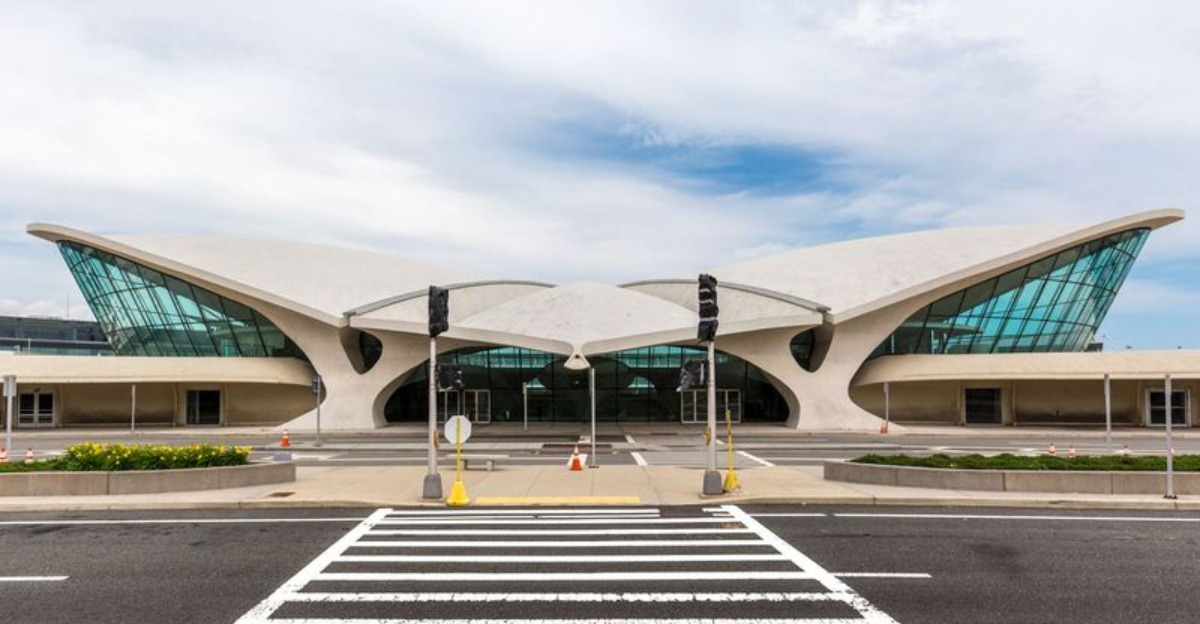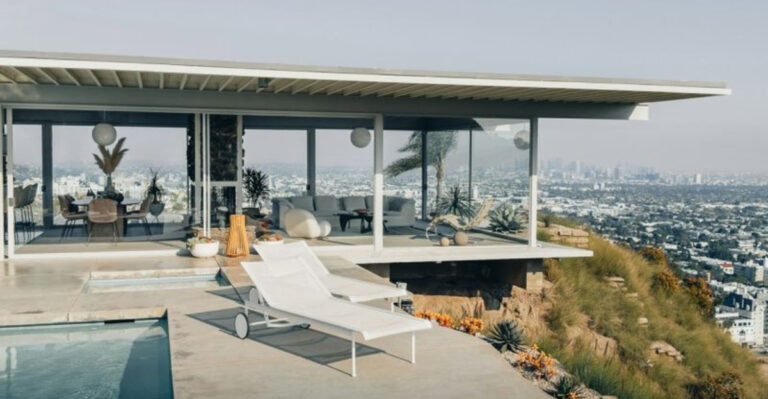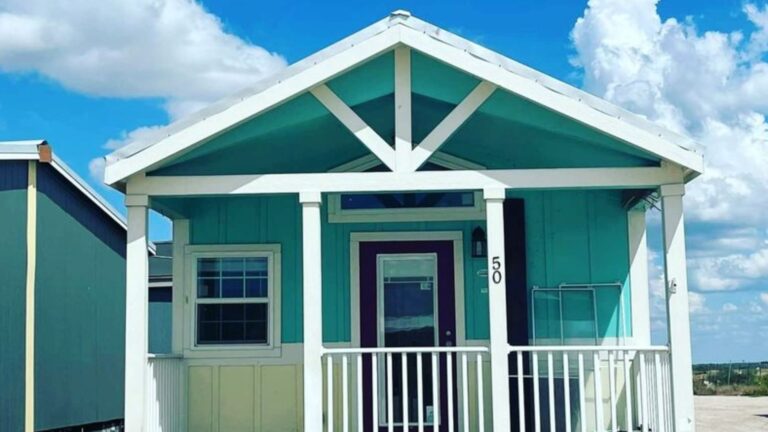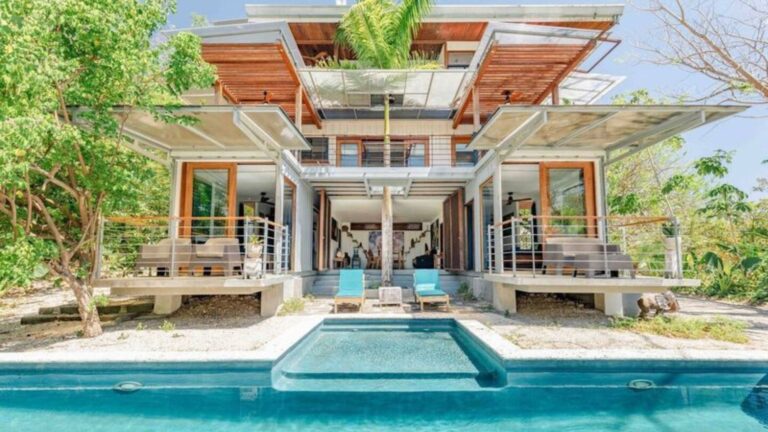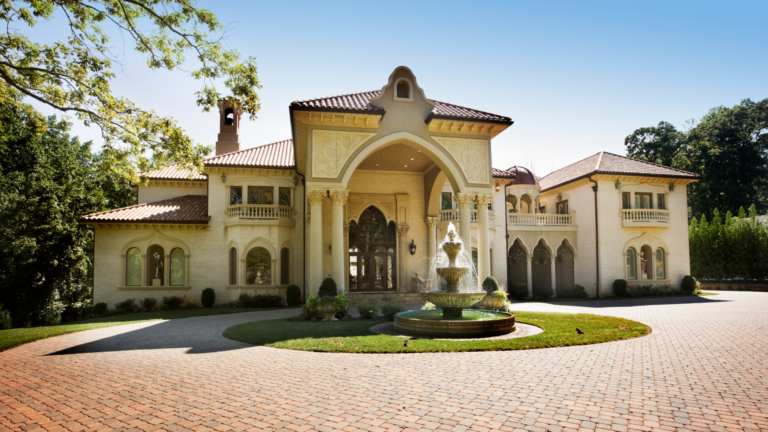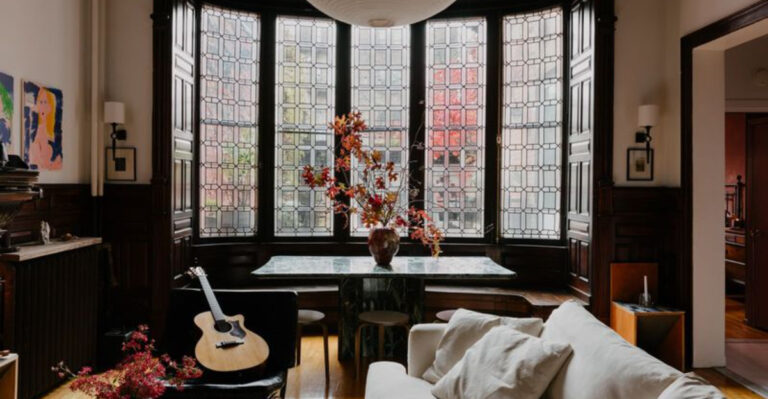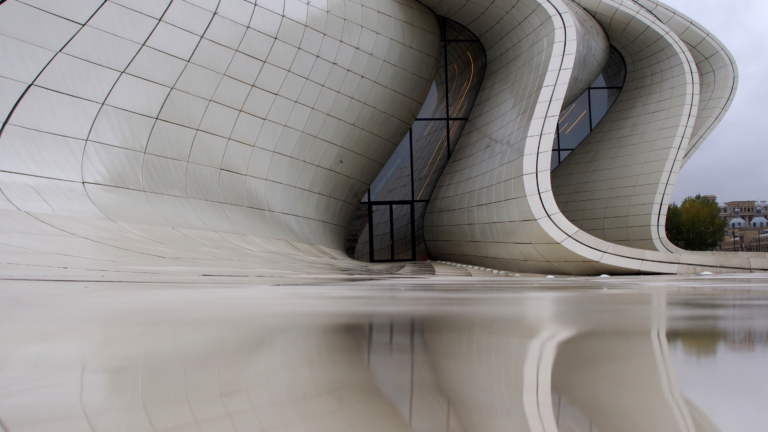20 Jaw-Dropping Modernist Buildings You Won’t Believe Exist
Buildings are more than just walls and roofs—they’re dreams carved into reality by architects who dared to imagine the impossible. Modernist architecture shattered conventions, replacing traditional forms with mind-bending shapes and revolutionary materials that defy both gravity and expectations.
From floating concrete fortresses to glass mountains that reflect the sky, these structures exist at the thrilling intersection of art and engineering. Each one tells a story of human ambition pushing boundaries further than we thought possible.
1. Fallingwater: Nature’s Perfect Houseguest
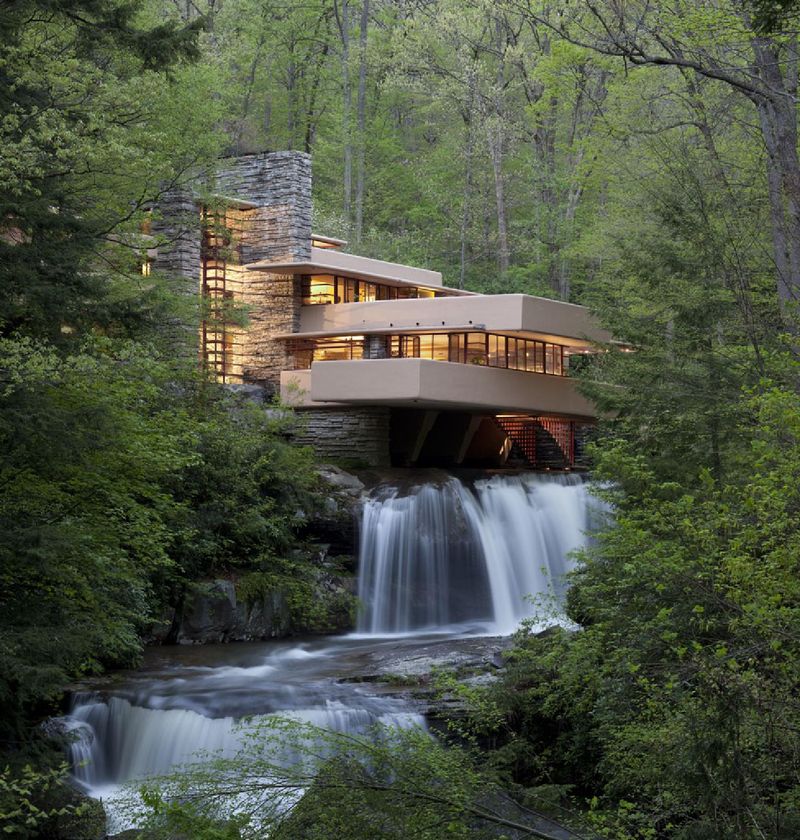
Frank Lloyd Wright’s masterpiece doesn’t just sit by a waterfall—it hovers daringly above it. Completed in 1939, this residential rebellion features dramatic concrete cantilevers that seem to float miraculously over the rushing water below.
The home merges so perfectly with its Pennsylvania forest setting that it feels like the landscape grew a house. Inside, the sound of water permeates every room, blurring the boundary between architecture and nature.
2. Casa Milà: Barcelona’s Stone Wave
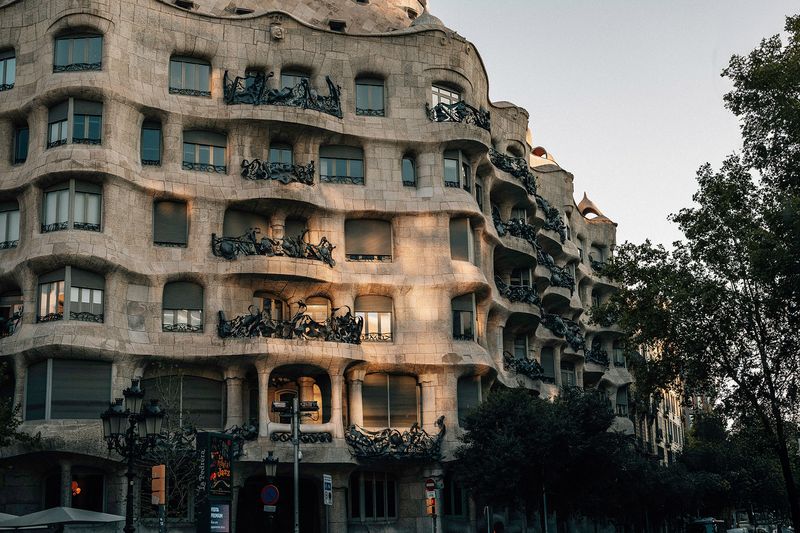
Antoni Gaudí’s apartment building looks like it was sculpted from melting wax. Its undulating limestone façade ripples like a petrified ocean, with twisted iron balconies resembling seaweed caught in the current.
Locals nicknamed it ‘La Pedrera’ (the stone quarry) for its organic, cave-like aesthetic. Completed in 1912, this building laughed in the face of straight lines decades before computer-aided design made curves fashionable.
3. Nakagin Capsule Tower: Tokyo’s Stackable Future
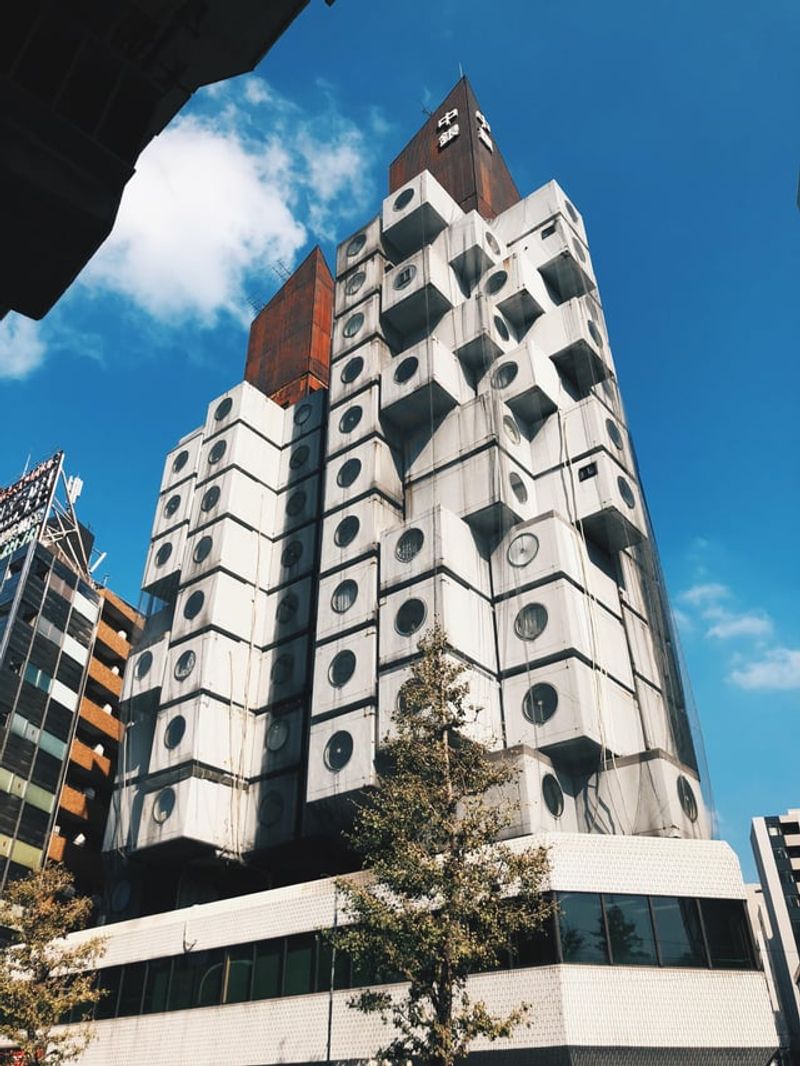
Picture a building made of washing machines—144 prefabricated pods bolted onto two concrete cores. Each capsule, measuring just 8×13 feet, contains a built-in bed, bathroom, and desk with vintage appliances from 1972.
Architect Kisho Kurokawa envisioned these pods being replaced every 25 years, though none ever were. Despite threatened demolition, this metabolist icon remains Tokyo’s most honest vision of retro-futurism.
4. Habitat 67: Lego Blocks for Adults
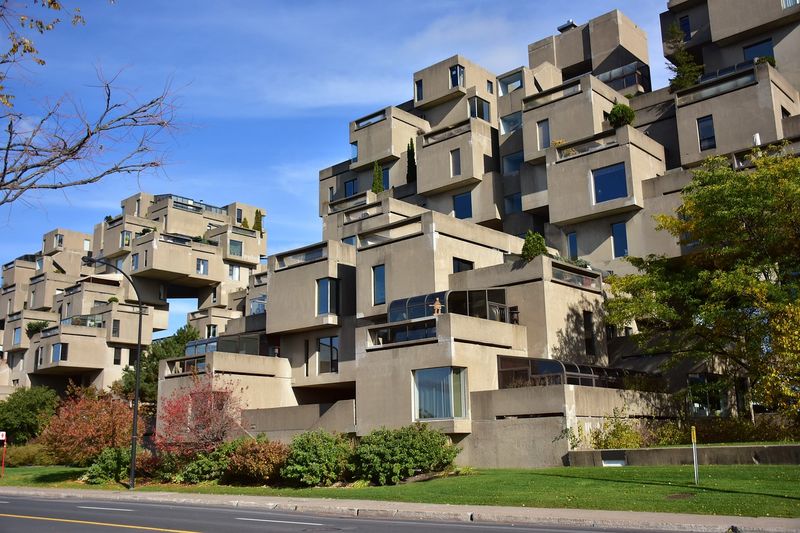
Moshe Safdie was just 25 when he reimagined apartment living as a game of architectural Tetris. His experimental housing complex stacks 354 identical concrete modules into a gravity-defying puzzle, creating 146 residences with garden terraces.
Originally built for the 1967 World Expo in Montreal, it resembles a blocky cliff village from some impossible future. Each apartment enjoys privacy, natural light, and views that traditional high-rises could never deliver.
5. TWA Flight Center: The Concrete Seagull
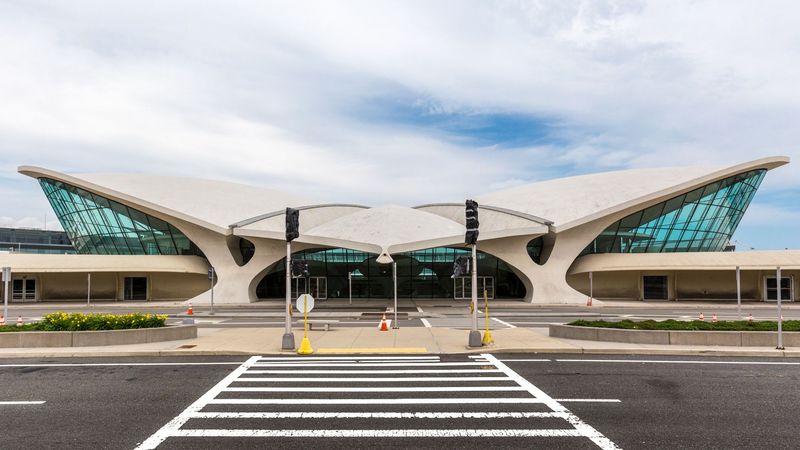
Eero Saarinen’s terminal at JFK Airport captured the romance of flight in solid form. Its swooping concrete roof spreads like wings, while the interior flows in one continuous gesture—no right angles allowed.
Completed in 1962, this terminal made waiting for planes feel like stepping into a scene from The Jetsons. Recently reborn as a hotel, it preserves the optimistic spirit of jet-age travel when flying still felt like magic.
6. Villa Savoye: The Floating Box
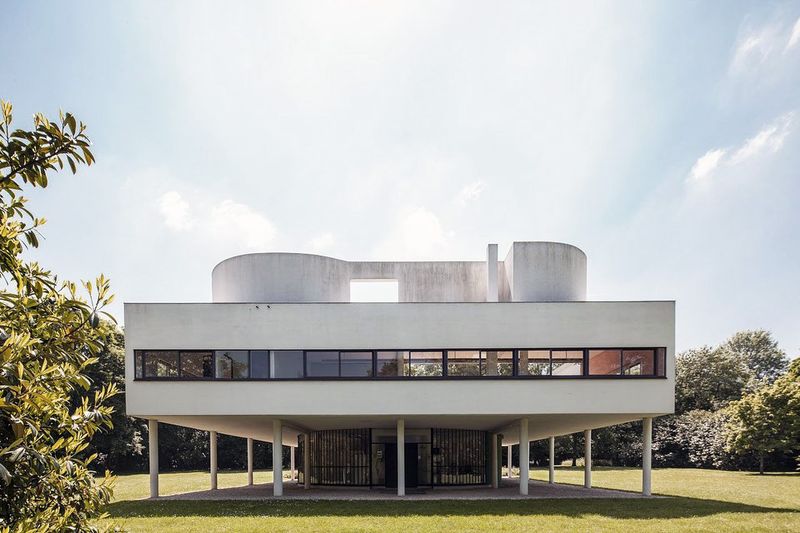
Le Corbusier’s pristine white villa hovers above the French countryside on slender pilotis (columns), looking like it might take off at any moment. Completed in 1931, it embodies his “five points of architecture” manifesto with its roof garden, open floor plan, and ribbon windows.
The home feels impossibly light despite being made of concrete. A curving ramp spirals through its center, guiding visitors on an architectural promenade that reveals new perspectives with each step.
7. Guggenheim Bilbao: Titanium Explosion
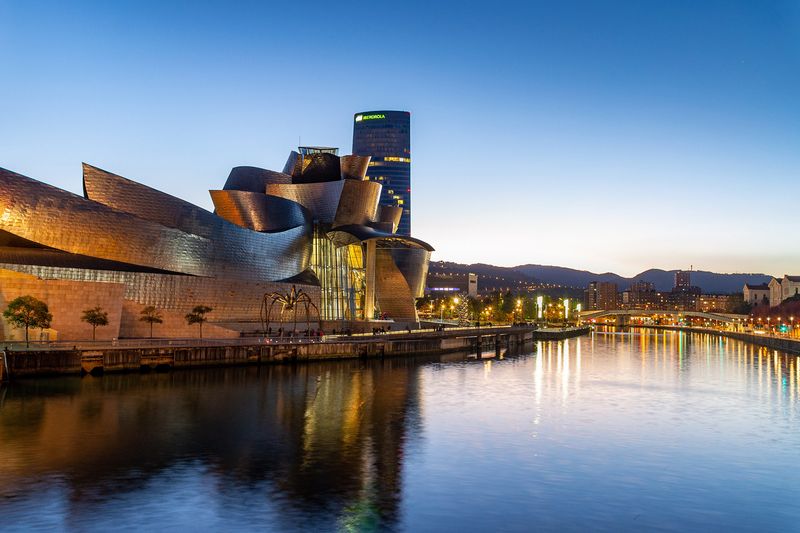
Frank Gehry’s museum doesn’t just break rules—it shatters them into gleaming metallic fragments. Completed in 1997, this titanium-clad fever dream of curved surfaces reflects Bilbao’s changing light like a living creature.
Before computer modeling, this building would have been impossible to construct. Its seemingly random forms actually follow complex mathematical principles. The structure transformed a declining industrial city into a cultural destination, spawning the term “Bilbao Effect” in urban planning.
8. SESC Pompéia: The Beautiful Factory
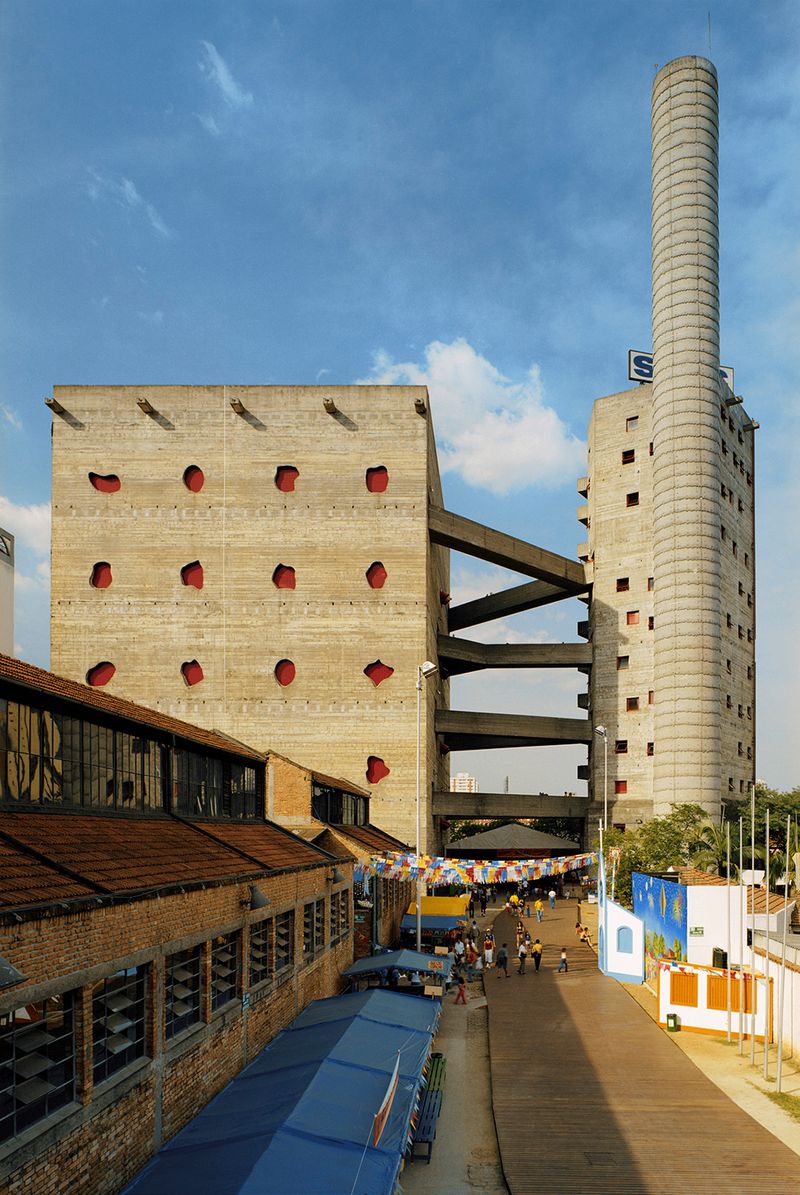
Lina Bo Bardi transformed an old drum factory in São Paulo into a brutalist wonderland where concrete towers are connected by precarious-looking aerial walkways. Inside, a creek flows through the community center, while windows in playful shapes punctuate the raw concrete.
Completed in 1986, it’s brutalism with a beating heart. Unlike the cold concrete monoliths of Europe, Bo Bardi’s creation pulses with Brazilian vitality—concrete that feels somehow warm and inviting.
9. Chemosphere: The Hollywood UFO
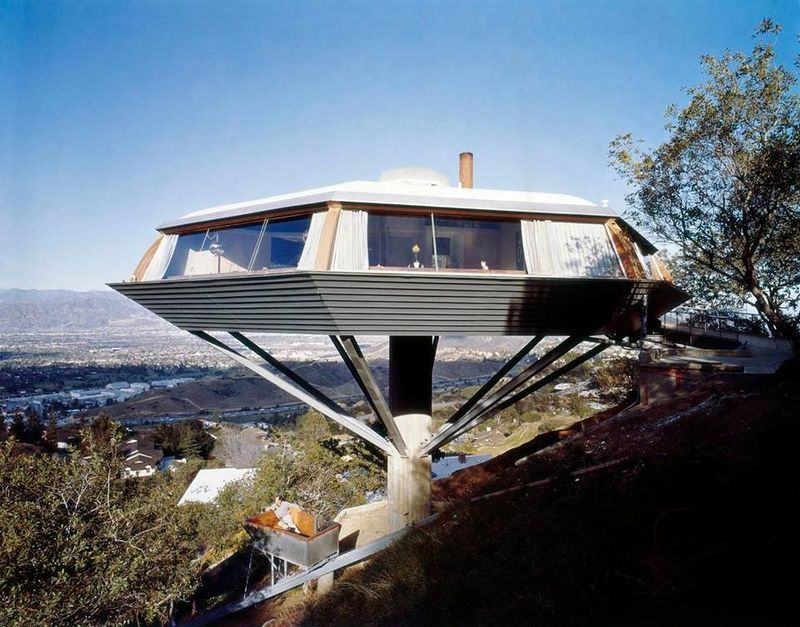
John Lautner’s octagonal house perches atop a single concrete column on a steep Los Angeles hillside, looking ready for takeoff. Reached only by funicular, this 1960 spaceship home solved the problem of building on a 45-degree slope in the most dramatic way possible.
Featured in countless movies, the Chemosphere embodies California’s space-age optimism. Its panoramic windows offer 360-degree views of the Hollywood Hills, while the interior feels like a Bond villain’s lair.
10. Farnsworth House: The Invisible Dwelling
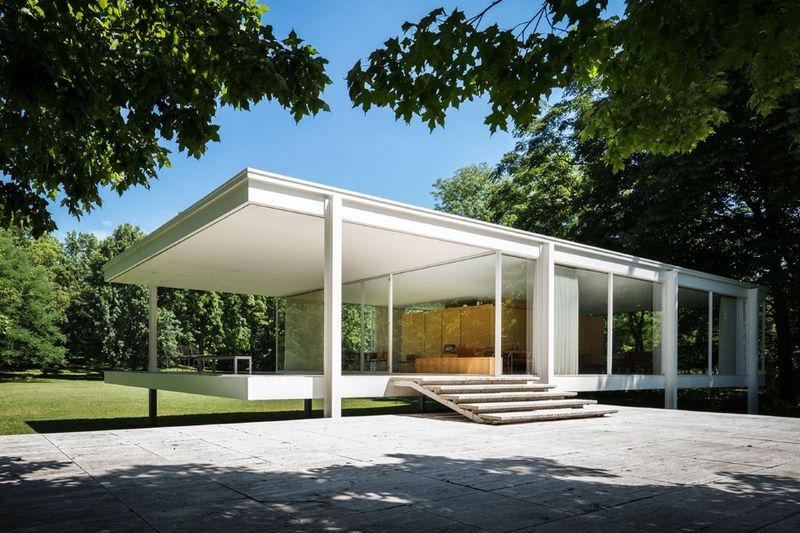
Mies van der Rohe’s glass box in an Illinois meadow seems to dissolve into its surroundings. Just eight steel columns support a floating floor and roof plane, with glass walls forming the only barrier between inside and out.
Completed in 1951, this weekend retreat for Dr. Edith Farnsworth is minimalism pushed to sublime extremes. Every detail was meticulously considered, from the travertine steps to the precisely placed furniture—architecture distilled to its absolute essence.
11. Lotus Temple: Sacred Geometry in Bloom
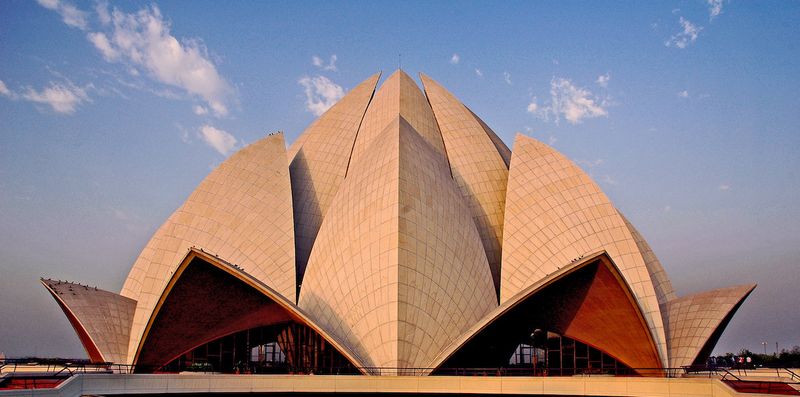
From a distance, this Bahá’í House of Worship looks like a giant concrete flower emerging from Delhi’s urban landscape. Twenty-seven freestanding marble petals arrange themselves in clusters of three to form nine sides.
Completed in 1986 by architect Fariborz Sahba, the temple attracts more visitors than the Taj Mahal. Inside, natural light filters through the marble petals, creating an atmosphere of ethereal tranquility—modernism achieving spiritual transcendence.
12. Sheats-Goldstein Residence: Hollywood’s Concrete Jungle
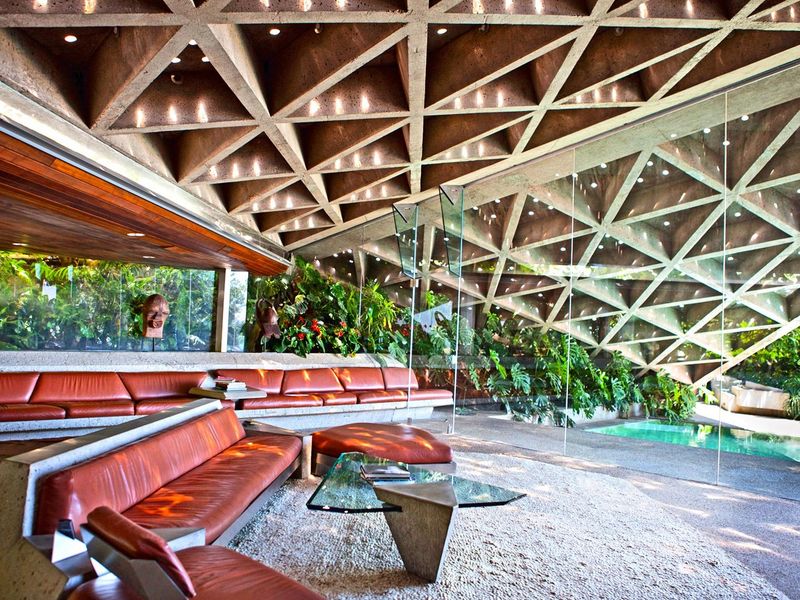
John Lautner built this Beverly Hills home directly into the hillside, blurring boundaries between architecture and landscape. Concrete triangles form a cave-like ceiling with 750 drinking glass skylights creating dappled light patterns that move throughout the day.
The living room opens entirely to the outdoors through frameless glass. Featured in The Big Lebowski as pornographer Jackie Treehorn’s pad, this 1963 masterpiece later gained a James Turrell skyspace and a nightclub called “Club James” built by its eccentric owner.
13. La Muralla Roja: Spain’s Geometric Labyrinth

Ricardo Bofill’s apartment complex rises from the Spanish coastline like a geometric mirage. Its interlocking staircases, platforms, and courtyards form a three-dimensional maze painted in bold pinks and blues against the Mediterranean blue.
Completed in 1973, the structure draws inspiration from North African kasbahs. Instagram discovered it decades later, turning this formerly obscure building into a pilgrimage site for photographers seeking the perfect shot of its Escher-like spaces and saturated colors.
14. Prada Marfa: Luxury Mirage in the Desert
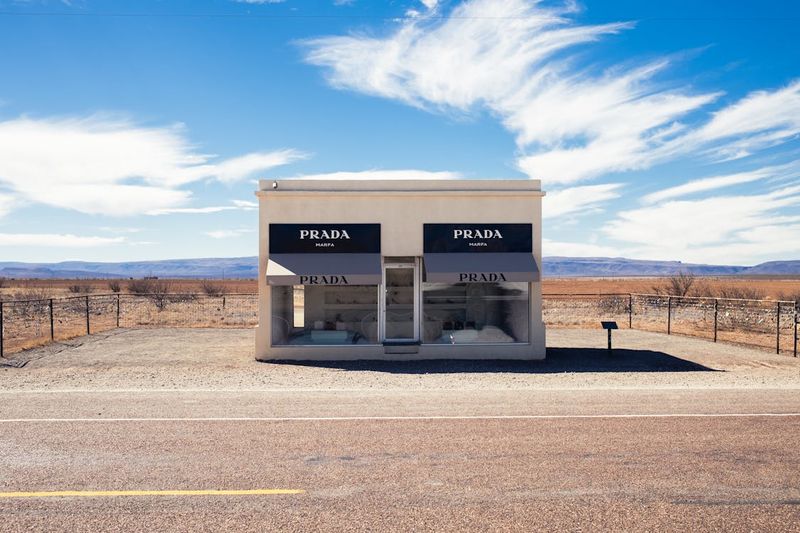
This fake Prada store stands alone on a desolate Texas highway, stocked with actual Prada merchandise from 2005 that nobody can buy. Created by artists Elmgreen and Dragset, it’s not a building meant for use but a sculpture about consumerism.
Constructed in 2005, it was meant to gradually deteriorate back into the landscape. Instead, it’s become a surreal pilgrimage site. The juxtaposition of luxury retail against emptiness creates a disorienting effect—like stumbling upon an alien artifact in the desert.
15. Garcia House: The Rainbow Arch
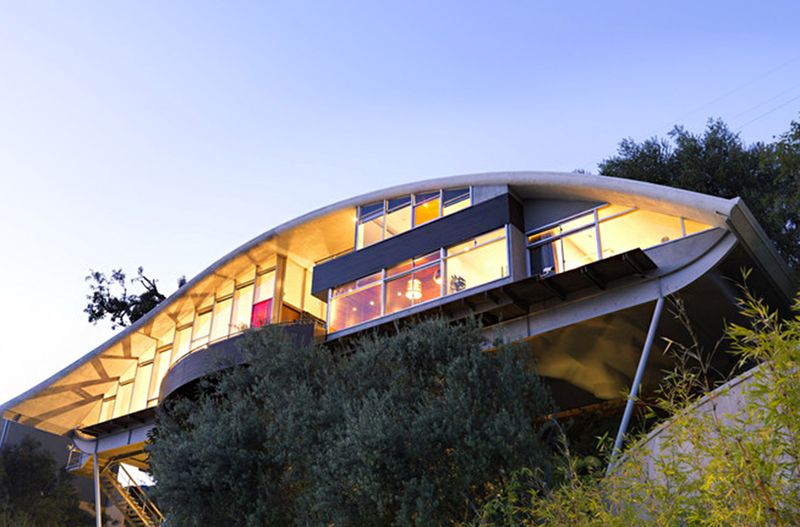
John Lautner’s almond-shaped home appears to hover above Mulholland Drive on needle-thin stilts. Its parabolic roof creates a rainbow-like arch, while stained glass panels in primary colors throw kaleidoscopic patterns across the interior.
Featured in Lethal Weapon 2 (where it gets dramatically destroyed), the 1962 home embodies Space Age optimism. Recently restored to its original glory, it represents California modernism at its most playful—architecture that celebrates its own audacity.
16. Klein Bottle House: Mathematics Made Real
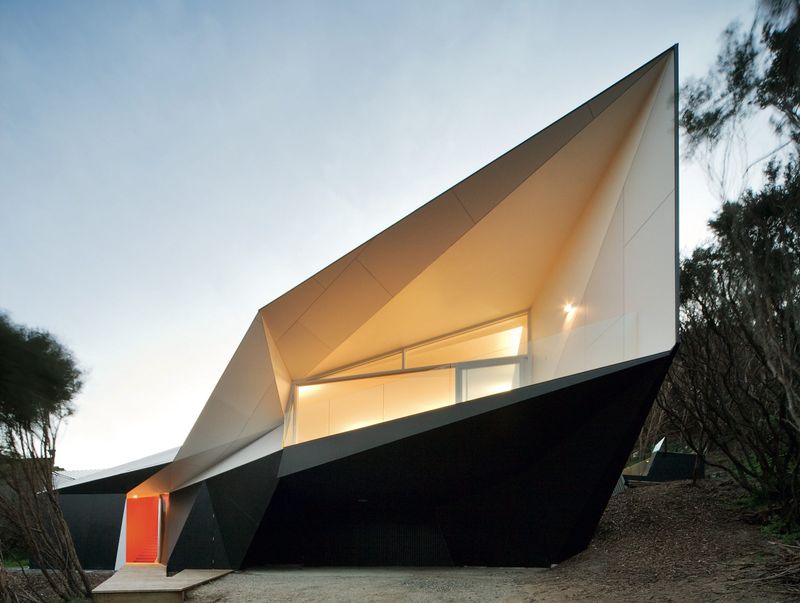
This Australian beach house takes its form from a mathematical impossibility—the Klein bottle, a surface with no inside or outside. Angular wooden planes fold and twist around each other, creating spaces that flow continuously.
Designed by McBride Charles Ryan in 2008, the house rejects the conventional beach box. Windows appear as geometric cutouts in seemingly random positions. The result feels like stepping inside a complex equation—disorienting, thrilling, and unexpectedly cozy.
17. Chichu Art Museum: The Invisible Gallery
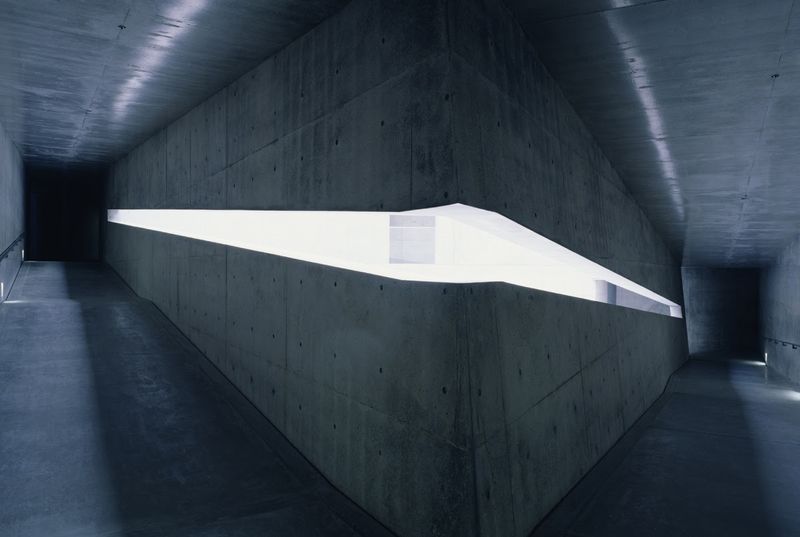
Tadao Ando buried this museum entirely underground on Japan’s Naoshima Island, making art viewable only through precisely engineered natural light. Concrete geometric forms create subterranean spaces that change dramatically as the sun moves across the sky.Completed in 2004, the museum houses works by Claude Monet, James Turrell, and Walter De Maria. Visitors descend into a series of concrete chambers where art and architecture become inseparable—a modernist temple where light itself becomes the most precious material.
18. Casa do Penedo: The Real Flintstones House
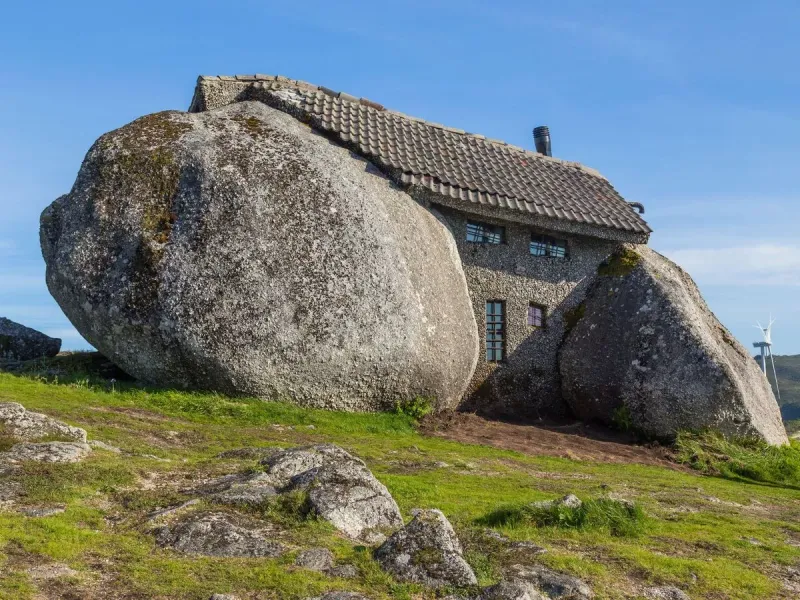
Four massive boulders form the walls of this primitive-modern home in northern Portugal, with concrete filling the gaps between rocks. Built in 1974 as a rural retreat, it looks like Fred Flintstone hired a brutalist architect.
Windows are cut directly into the stone, while a rustic granite staircase spirals through the interior. Now a small museum, this house represents modernism’s rarely seen primal side—embracing natural forms while rejecting traditional building methods.
19. Chapel of the Holy Cross: Divine Wedge
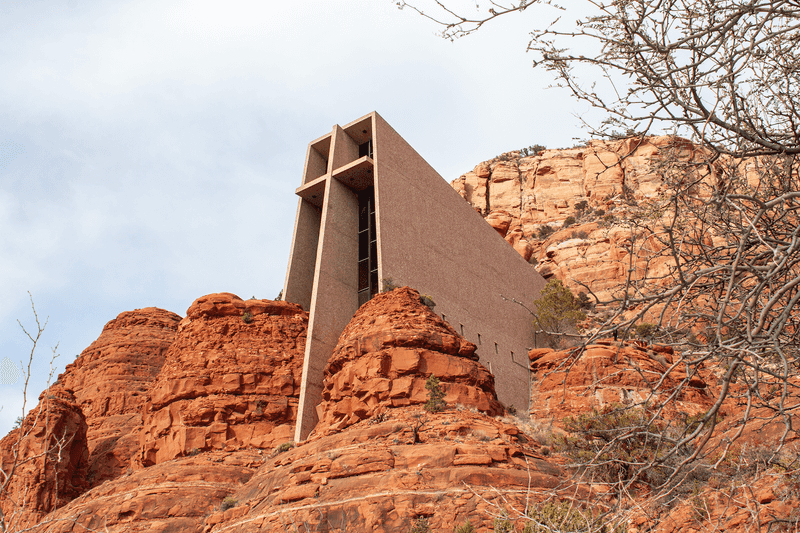
This Catholic chapel juts dramatically from Sedona’s red rock buttes like a knife slicing into the landscape. A giant concrete cross forms both structural support and religious symbol, while angled walls of glass frame views of the Arizona desert.
Designed by sculptor Marguerite Brunswig Staude and completed in 1956, the chapel appears both ancient and futuristic. It represents spiritual modernism at its most powerful—architecture that uses new forms and materials to evoke transcendent emotions.
20. Einstein Tower: Expressionist Science Fiction
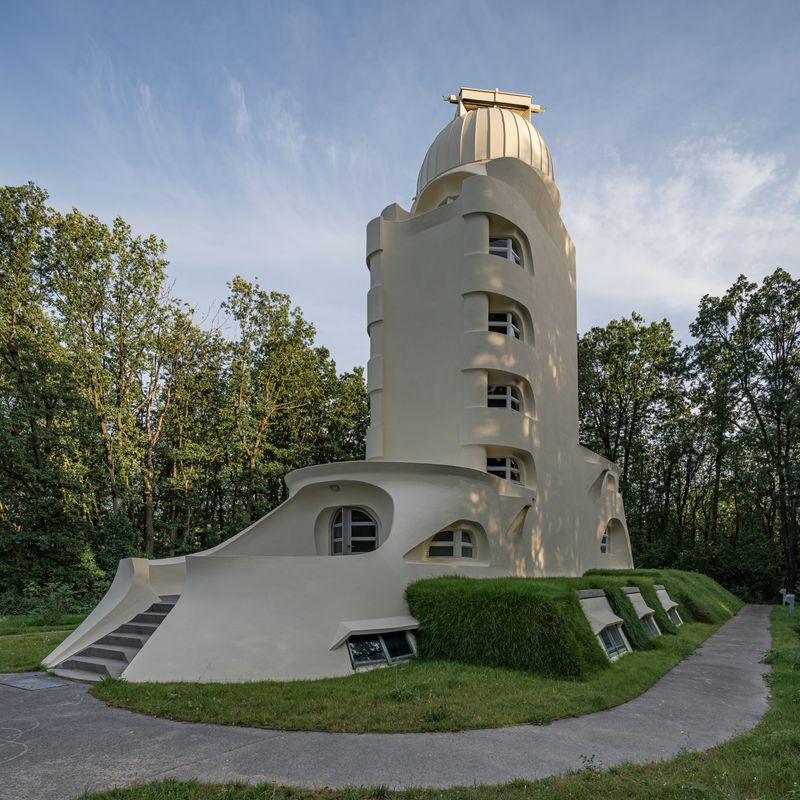
Erich Mendelsohn’s observatory looks like it was sculpted from soft clay rather than built with bricks. Completed in 1921 for testing Einstein’s theory of relativity, this building broke free from right angles decades before computers made curved architecture possible.
Its organic, almost alien form houses a telescope and laboratories. Despite appearing futuristic even today, it was constructed using traditional materials and techniques—workers shaped its curves by hand, translating Mendelsohn’s expressionist sketches into solid form.

